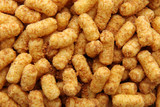 The study published in the Journal of Plant Foods for Human Nutrition found that inclusion of these beta-glucan (β-Glucan) fractions can be utilized by snack firms to increase dietary fiber content while also manipulating the glycemic load (GL) – an estimate of how much the food will raise a person’s blood glucose level after consumption taking into account carbohydrate content.
The study published in the Journal of Plant Foods for Human Nutrition found that inclusion of these beta-glucan (β-Glucan) fractions can be utilized by snack firms to increase dietary fiber content while also manipulating the glycemic load (GL) – an estimate of how much the food will raise a person’s blood glucose level after consumption taking into account carbohydrate content.Typically extruded snacks have a high GL content due to the partial gelatinization and fragmentation of starch from the shearing effect of the extruder, said the researchers from Manchester University in the UK.
Reduced glycemic response
However, with the inclusion of beta-glucan fractions for barley and mushrooms, in vitro findings showed that the glycemic response could be reduced because the starch digestibility was manipulated and hence the rate of glucose release altered during digestion.
The potential glycemic response was reduced by 20-25% for barley and 17-25% for mushroom beta-glucan fractions.
“Substantial reductions in the in vitro glycemic response (up to 25% compared to the control product) illustrates the possibility of utilizing both barley and mushroom fractions to reduce the energy content of snack foods and help modulate the overall glycemic response,” the researchers said.
“This could lead to the further development of functional foods utilizing bioactive substances derived from mushrooms and barley which deliver dietary fiber requirements to the modern consumer,” they added.
Read the full article





